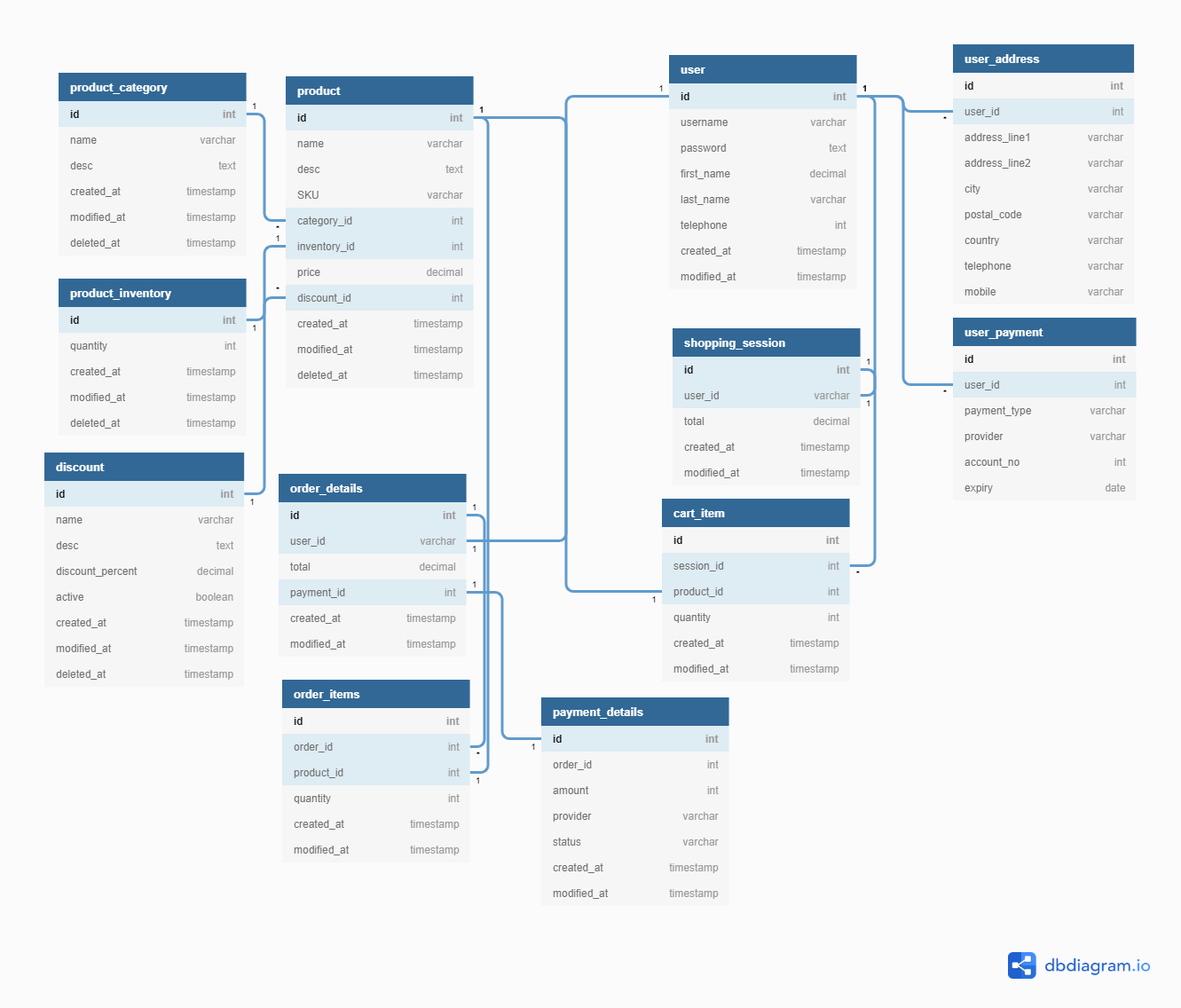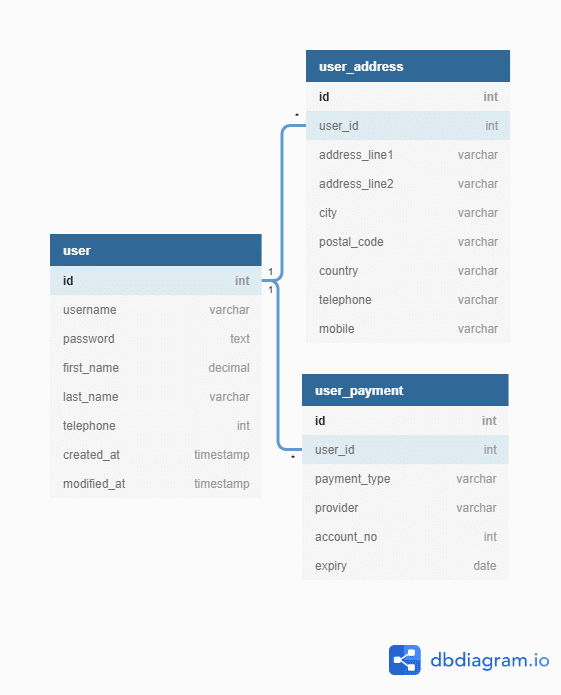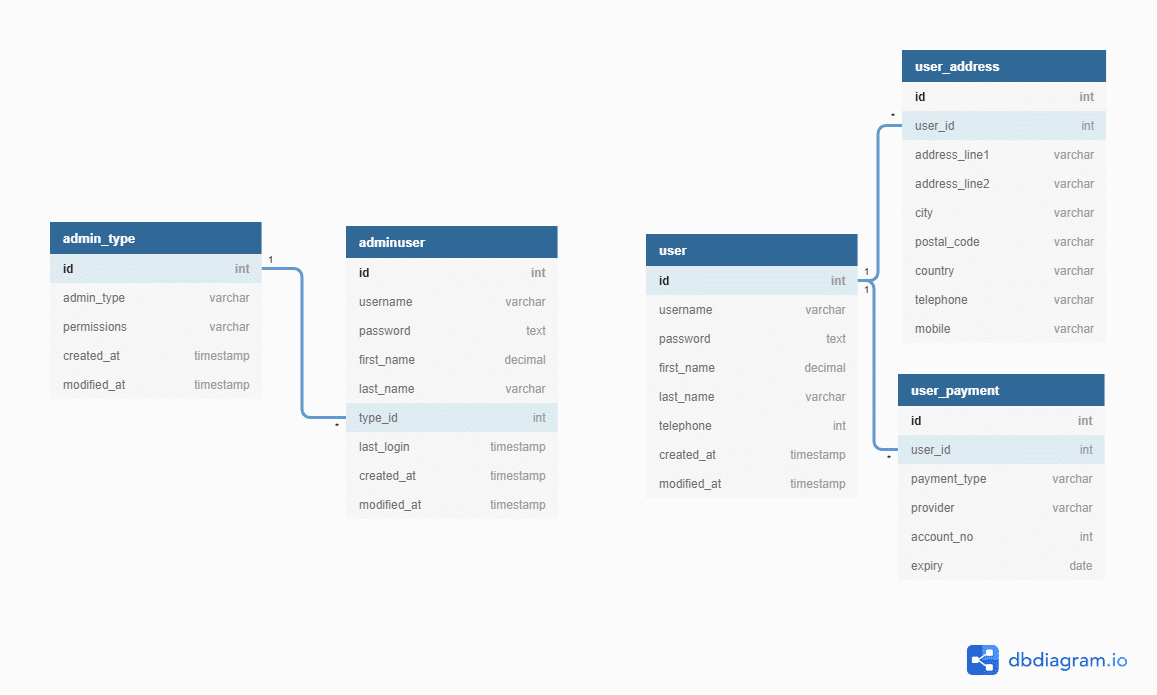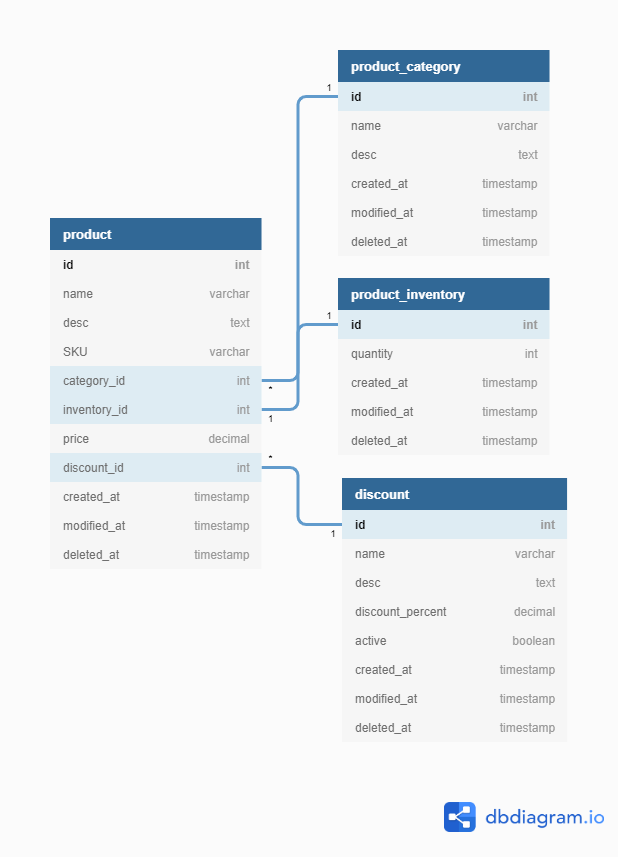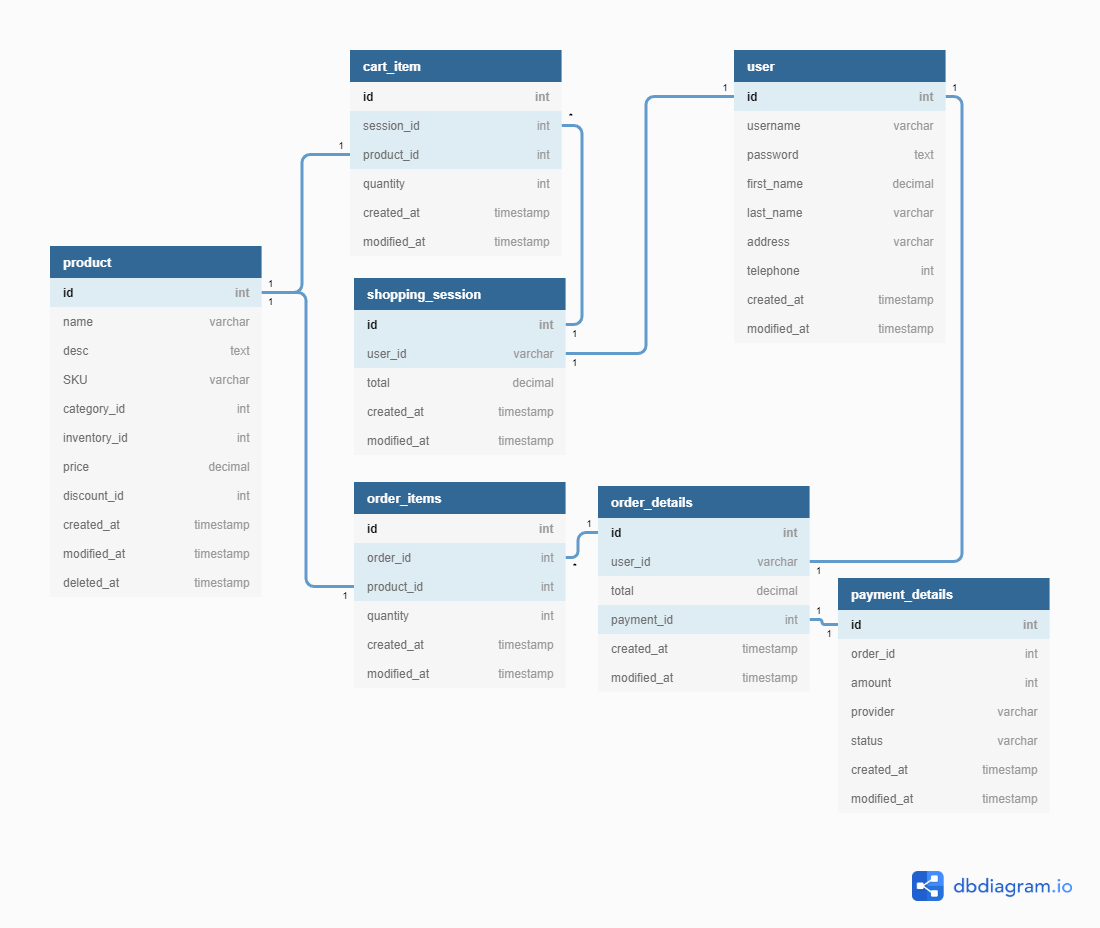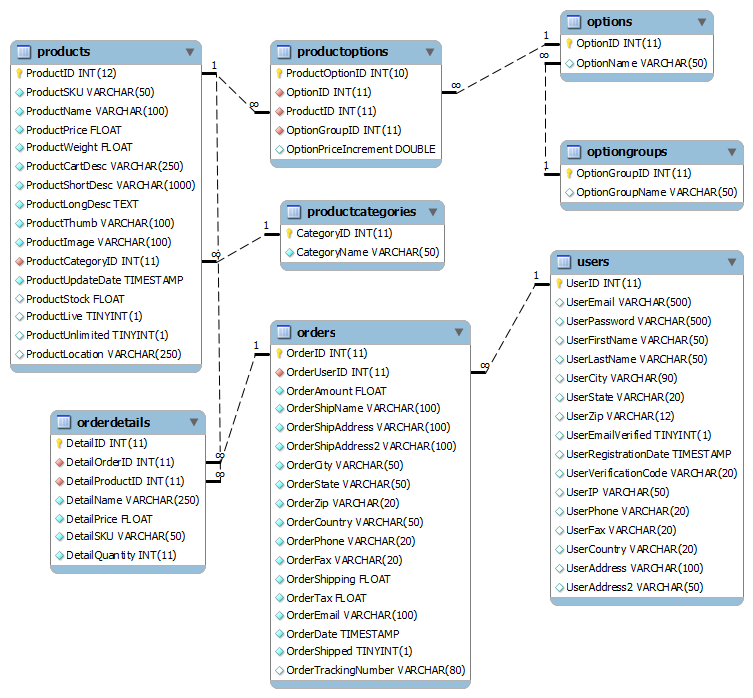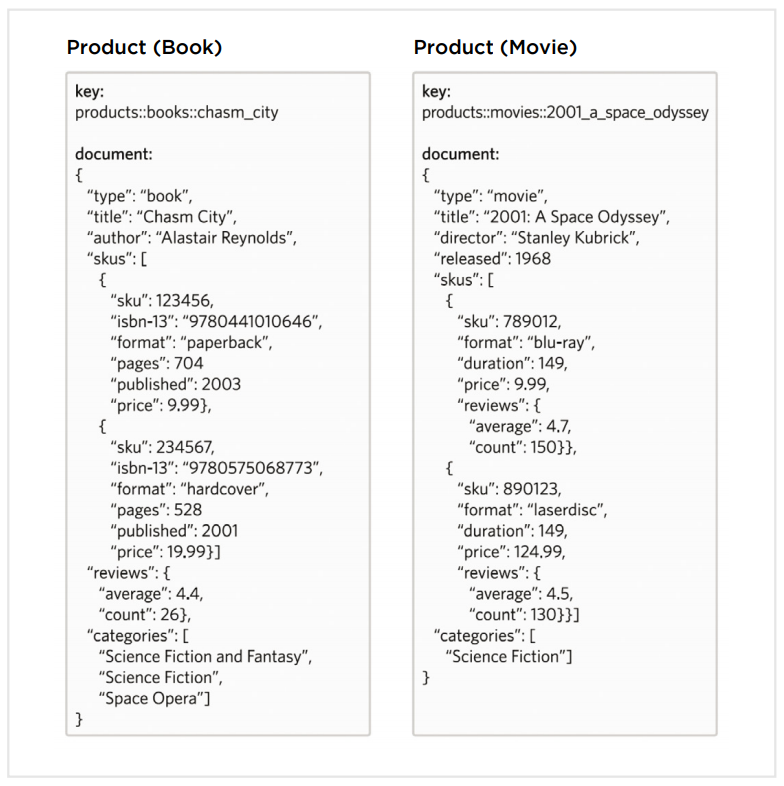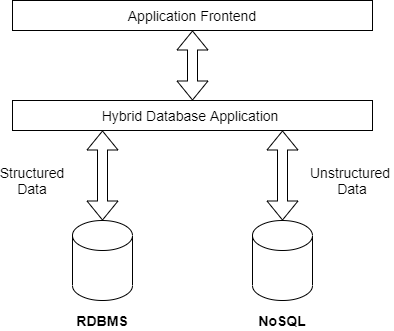What’s an Example of Good E-Commerce Database Design?
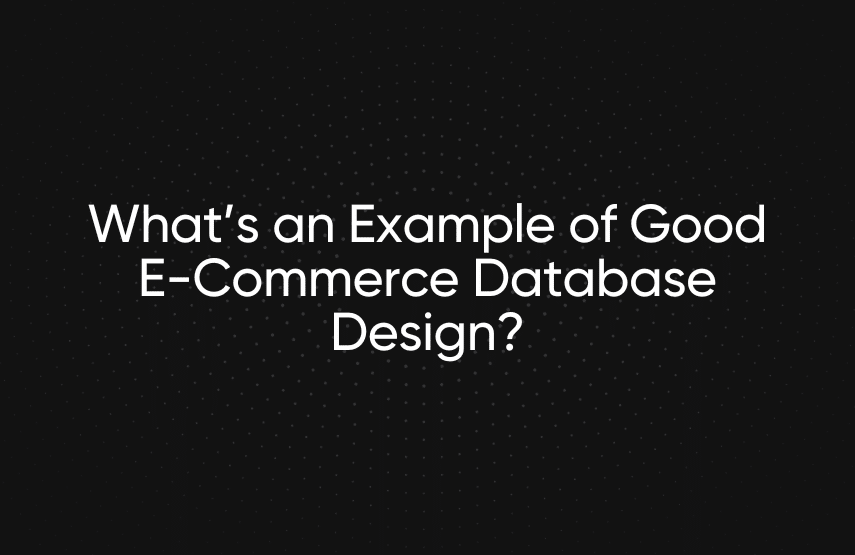
Databases are vital tools for storing, managing, and retrieving information. They are also critical for building an e-commerce system. A well-structured database powers e-commerce and manages all the interactions within the system.
A good e-commerce database design includes:
- Simple, functional database structure: The database table structure is simple but covers all the required functionality without compromising the user experience.
- High performance: Database queries execute quickly to facilitate live customer interactions and support a frictionless shopping experience. Therefore, the selected database should have good indexing and performance optimization options.
- High availability and scalability: A good database design is highly available with automatic snapshots and enables automatic scaling to support future platform growth as well as sudden traffic spikes.
Based on these characteristics, a good e-commerce database design involves three key parts:
- Database scope: The scope refers to the planned functionality of the database. The underlying table structure of the database, its relationships, and indexes all depend on the functionality of the e-commerce platform.
- Database type: The type can vary from a relational database to a NoSQL database or a hybrid approach depending on the requirements and the underlying data structure.
- Database infrastructure: Your database can be either unmanaged or managed. The former means spinning up your own database service; the latter means using something like Amazon RDS or Amazon DynamoDB.
In this article, we will review examples of e-commerce databases as they relate to these three areas. We will also explore database design alternatives that simplifying data management for e-commerce, specifically a product information manager.
Database Scope
The main consideration when designing the database is identifying the functionalities offered by the e-commerce platform. These functionalities can be further divided into core functions and additional functions.
Core functions are the functions necessary for facilitating the day-to-day operations of the e-commerce platform, including user management, product and inventory management, shopping cart function, payment management, and shipping/logistics management.
Additional functions are the nice-to-have functions for the e-commerce platform that enhance the user experience for both end-users (customers) and administrators (the business). Additional functions include marketing functions, help desk and support, advanced analytics, and third-party integrations.
Core functions
In this section, let’s see how to structure the database to facilitate the core functions. The following table structure is an example of a database design that covers the core functionality of an e-commerce platform.
This example covers all the basics of an e-commerce platform. Here, the table fields and indexes depending on the design of the overall platform. It contains three separate sections for user management, product management, and shopping process. Let’s have a closer look at each section.
User management
We have created a user table that contains all the user details along with user_payment and user_address tables to store multiple addresses and payment details of users. This structure offers more granular control over data while eliminating duplicate records.
Another way to manage users is by creating two separate user tables for end-users and administrators and assigning relationships according to their requirements, as shown below.
Product management
Managing products is not simply about maintaining a list of products. You also have to manage the inventory, discounts, categories, and other attributes of the products. So always focus on simplifying the data structure while reducing duplicates. In the following table structure, the main product table contains information about the products.
There are two other separate tables called discount, product_inventory, and product_category that are connected to it through database relationships. This approach provides the greatest level of flexibility to the database.
For instance, we can simply query the product_inventory table to check for inventory without going through all the data associated with other related tables. This is also a good place to utilize indexes to increase the performance of the database.
Shopping process
This is the most critical and complex part when it comes to designing the database. The shopping process will guide a user to search the products, add the desired products to the shopping cart, and finally complete the transaction using a payment provider.
The heart of the e-commerce process connects users with products. A good chunk of design effort should be exhausted to streamline the shopping process.
In the example above, there are shopping_session and cart_item as temporary data stores that only store the shopping session information of the current user until the order is confirmed and the data is moved to permanent storage tables with the payment details (order_details, order_items, and payment_details).
Check out this article for a detailed explanation of how to design a shopping cart database.
As shown in this section, the scope of the database structure is determined by the overall functionality of the platform. Therefore, it is paramount that you properly define the required functionality before diving into designing the database. This way, you can create a clearly defined data structure with enough flexibility to support future expansions.
Database Type
The next consideration is to determine the type of database. To have the best e-commerce DB design, you must first consider two main database types: RDBMS or NoSQL databases.
Relational e-commerce database example
This is similar to spreadsheets and uses tables, columns, and rows to organize and retrieve data. It is built using the standard query language (SQL) and all the data is related to each other. Examples include MySQL, PostgreSQL, MariaDB, Microsoft SQL, Amazon RDS, and Azure SQL Database.
Many e-commerce sellers use a relational database design centered around the following tables: products table, customers table, and orders table. Additional tables can be added as required to support shipping, categories, product reviews, and more.
We have covered the database structure in the previous section where the scope of the database was defined. Below, you can see a diagram of a simple e-commerce database design built using MySQL.
MySQL
While a standard relational database design will work for many e-commerce stores, there are situations where it is advantageous for retailers to follow another approach.
Non-relational e-commerce database example
A non-relational database is a nontabular database with a flexible schema that works well for storing unstructured data. Contrary to its name, a non-relational database can store related data. It does so by nesting related data within a single data structure instead of splitting them between tables.
There are various NoSQL databases, and the most popular ones are document stores and key stores. Examples include MongoDB, Apache Cassandra, Amazon DynamoDB, Azure CosmosDB, and Couchbase.
NoSQL
Most of the world’s largest online retailers, including Walmart and eBay, use NoSQL databases to power their e-commerce systems. This is because NoSQL databases providing the required performance and scalability to effectively manage large catalogs and unstructured data like user data and images.
A good example of an e-commerce database built using NoSQL technology is CouchBase, which uses a document store as its database type. With a document database, data is simpler and easier to access as an entire product can be stored in a single document instead of storing across multiple tables.
Below, you can see an example of data modeling for different products with CouchBase’s NoSQL database.
CouchBase NoSQL
Both of these database types are solid options for any e-commerce platform, and the choice is up to the designer and depends on the requirements of the platform. A relational database will provide a simple and robust platform to create the database while NoSQL offers better data flexibility, scalability, and slightly better performance. However, there is a way to combine the two.
Hybrid database example
Another exciting option is to use a combined solution utilizing an RDBMS for structured data such as user details, order details, payment details, and a NoSQL database for unstructured data such as product details or marketing information. This is referred to as a hybrid e-commerce data model.
Hybrid Database Structure
Creating a hybrid database structure is relatively more complex than using traditional database types (RDBMS or NoSQL) since a hybrid approach will utilize the application to combine data from both sources. This allows the developer to combine the strengths of both database types.
However, this kind of approach is only suitable for truly complex application architectures that offer users many different functions. For instance, if your purpose is to speed up an RDBMS, it’s easier to configure a caching server such as Memcached rather than going for a hybrid approach.
Database Infrastructure
After selecting a database type and designing the data structure, we need infrastructure to run the database. The infrastructure type will depend on the deployment of the e-commerce platform.
One option is to provision a server, install the database software, and manage all the aspects from security to maintenance. The other option is to use a managed database service like Amazon RDS or Azure SQL for RDBMS, or Amazon DynamoDB or Azure CosmosDB for NoSQL.
Among these two options, the managed approach saves time and does not require any maintenance as these are SaaS offerings.
A managed database will offer peace of mind for any developer as it is backed by a reputed cloud provider with a service level agreement to provide maximum uptime. It will also enable the developer and administrators to focus more on creating and optimizing the database without dealing with server or database maintenance.
A slight downside of a managed platform would be the higher cost associated with it when compared to managing your own servers. However, when considering the total cost of ownership (TCO) and operational expenditure (OpEx), a SaaS solution is the ideal option for scaling an e-commerce database.
PIM Software for Data Management
Product information management (PIM) is a critical component of the core functionality of any good e-commerce platform. It provides a flexible solution for managing all your product data inside a single database in the cloud.
Moreover, PIM is an excellent option for retailers looking to sell on multiple channels. Having a centralized database in the cloud, PIM allows easy management and delivery of product information to any place.
Another main advantage of PIM is the ability to collect and organize data in a variety of formats. Different platforms have their own catalog structure and PIM software automatically sends data to these channels in the proper format.
fabric PIM is one of the best examples of e-commerce DB design using PIM software. It serves as a single source for centralizing all your data in the cloud, allowing businesses to benefit from increased productivity while ensuring all information is accurate and up to date across various channels.

Content marketer @ fabric. Previously marketing @ KHON-TV and Paramount Pictures.
